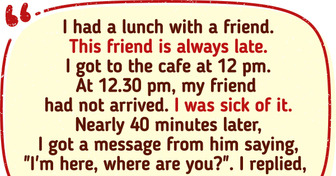8 Everyday Habits Japanese People Strictly Follow That Foreigners Marvel At

There are some very famous, popular foods, such as cheesecake and French fries, and we may assume it’s obvious where they came from. But we often forget that the name doesn’t always accurately portray the origin of something. Also, immigrants have always carried their unique recipes with them, giving them away to the country they landed in. This means that even though something may be popular in one country, it very well could have originated somewhere else.
Here at Bright Side, we love busting myths and restoring the truth that hides behind our misconceptions.
According to historians, the first doughnut-like creations date back to Ancient Greece and Rome. Both nations used to fry dough balls and dip them in honey. However, it never got the name “doughnut.”
The story continues to the nineteenth century, when the Dutch were making olykoeks or oily cakes, which were balls of cake fried in pork fat. Sometimes, they would fill the cakes with nuts or fruit to avoid having to cook them. But the ring shape we know today wasn’t invented until 1847, by Hanson Gregory, on a ship. He thought of that solution to avoid any uncooked dough at the center of the doughnut.
This sweet recipe dates back to Ancient Rome, where people used to dip bread in milk and sometimes eggs before frying it. But it wasn’t until 1660 when the recipe appeared in a book with the name “French toast.” While most people think that the word “French” refers to the country, in reality, it means “to slice” in old Irish. And after the Great Famine, Irish immigrants who traveled to America and Canada brought the term with them.
The oldest cheesecake known to man was made in 5 BCE in Ancient Greece on the island of Samos. It was created using fresh cheese that was then mixed with flour and honey before being baked. It was considered a great source of energy and was even served at the 776 BCE Olympic Games. Later, at the end of the Medieval period, the English added a pastry base to make it look like a tart.
In the 1730s, a shop named “Cheesecake House Tavern” opened in Philadelphia in the United States. That is where the cheesecake evolved, and different flavors were added. And in the 1990s, the recipe started taking over New York, where they started using cream cheese instead of actual fresh cheese.
The word “French” doesn’t refer to the origin, but to the way of preparing and cutting the potatoes. And it was people in Belgium that created french fries using the julienne method of slicing. It is said that the dish was born in 1680 when the citizens of Namur were left without any fish after their local river froze. In search of something else to eat, they decided to start frying potatoes.
We can bust the myth that the Caesar salad was named after Julius Ceasar since it was actually created by an Italian man named Caesar Cardini. He was a chef that worked in many restaurants in the US before inventing his famous salad. It must have been sometime after 1920 when he invented it while he was in Tijuana, Mexico. The original recipe included full stacks of lettuce, raw egg, olive oil, croutons, Parmesan cheese, and Worcestershire sauce.
One of the most traditional British dishes was actually created by people in Portugal. After they migrated to the UK, they started selling their recipe of fried fish in the streets from trays hanging from their necks. The recipe was known to have reached the UK by 1781, but it wasn’t until the later nineteenth century that Londoners and most English people were aware of the dish. We still don’t know how the potatoes entered the picture, but the combination is surely one of the best known to humanity.
Kipfel is the Austrian baked good that was the inspiration for the croissant, since it was crescent-shaped and had large amounts of butter or lard. It was first invented in 1683, but in around 1850, the French borrowed the recipe and used puff pastry to make the croissant. Soon after, this baked good became so popular that many manufacturers started making pre-made frozen dough. This is how the modern croissant made its way to the US in 1981.
Neither the pie nor the apples originated in America, as early colonists of Jamestown brought apple seeds from Europe with them to the states. The first apple pie was created in England in 1390 and didn’t necessarily include sugar or have an edible pastry. There is also evidence showing that the Dutch had their own apple pie back in 1514. The American version of apple pie first appeared in a cookbook in 1796, where there were 2 versions of the fruit-based dessert.
This delicious treat doesn’t actually come from Scotland. One theory says that the English developed it at the London department store, Fortnum & Mason of Piccadilly, in 1738. However, it is debated that it was created in Yorkshire town, Whitby. The debate might never end, but it is also said that the recipe was inspired by the Mughlai dish, nargisi kofta.
3 countries are fighting over the creation of crème brûlée — France, England, and Spain. The English say that during the seventeenth century, a college student prepared a creamy custard for the kitchen staff. The cream was unsweetened, had a caramelized sugary top, and was given the name “trinity burnt cream.” On the other hand, the Spanish claim that their crema Catalana is the true ancestor to the dessert.
But the French recipe is still the one considered to be the original, even though the name didn’t appear until the nineteenth century. The recipe is probably another version of a custard dessert that was made in the Middle Ages. Even though the English and Spanish versions are not the same as the French, they still think that they were the inspiration behind crème brûlée.
Did you know the true origin of any of the foods shown above? Are you surprised that some of these famous foods did not originate in America, as we all thought?











